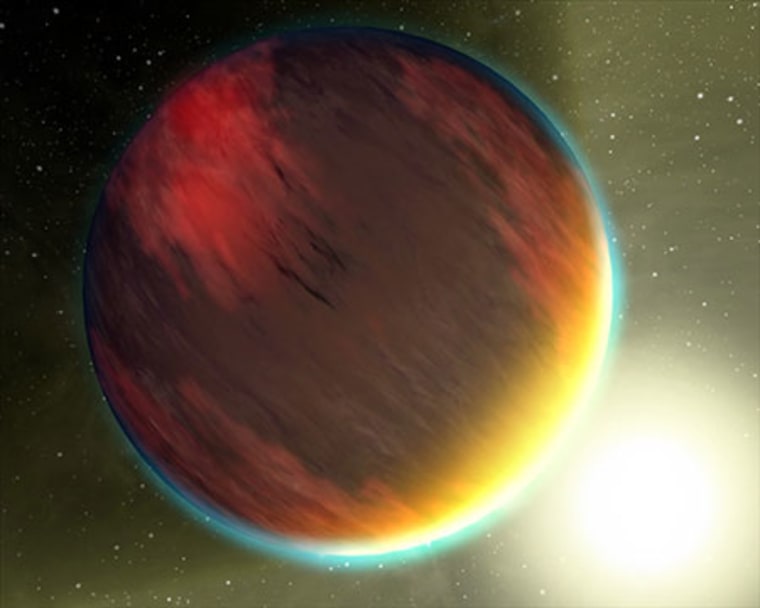Scientists have found clear evidence that water vapor exists in the atmospheres of giant, hot planets around other stars.
These big gaseous exoplanets have masses similar to or greater than Jupiter's (which is about 317.8 times the mass of Earth). Many of them orbit precariously close to their parent stars, so they scorching hot.
A team of astronomers used NASA's Spitzer Space Telescope to examine the spectrum of one such exoplanet, dubbed HD 189733b, for a telltale signature of water vapor. Water is a key requirement for life as we know it, though HD 189733b (about 65 light-years from Earth) is too hot to be habitable.
Models of the atmospheres of these so called hot Jupiters have predicted that an abundance of water vapor should be present in the planets' atmospheres, but recent observations failed to turn up any conclusive evidence of the molecule's presence in HD 189733b's atmosphere, said astronomer Drake Deming of NASA's Goddard Space Flight Center in Greenbelt, Md. Deming was not involved in the new study.
An April 2007 Astrophysical Journal study reported to have found strong evidence for water vapor in the atmosphere of a world called HD209458b using Hubble Space Telescope data. Deming said that this work "was good evidence" but that "a lot of people [in the scientific community] had doubts — they didn't think it was unequivocal."
The new work measured the spectrum of the star/planet system before, during and after the planet's regular disappearance behind the star, allowing the astronomers to single out the planet's spectrum. In it, they found "an unequivocal signature of water vapor in the atmosphere of the brightest transiting exoplanet yet detected," Deming wrote in an accompanying editorial piece in Nature.
Nailing down the technique for the detection of water is a key step toward finding Earth-like planets that have water and other key life-related molecules, Deming said.
Last month, another group of astronomers announced that they had detected carbon dioxide in HD 189733b's atmosphere; carbon dioxide is one of four chemicals that life can generate, so it is also a key molecule that could be used in the search for life outside our own planet.
